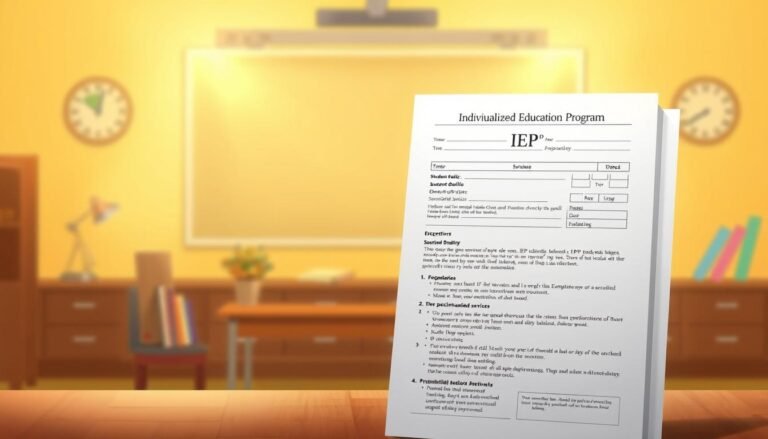
Empowering Students: An Overview of Various Learning Disabilities for Essential Classroom Success
Introduction
In our increasingly diverse educational landscape, understanding the unique challenges faced by students with learning disabilities is not merely beneficial, but essential. "Empowering Students: An Overview of Various Learning Disabilities" sheds light on this crucial topic, providing insights into how educators, parents, and communities can work together to nurture potential and promote success. Learning disabilities encompass a spectrum of challenges, including dyslexia, ADHD, and autism spectrum disorders, each requiring tailored approaches to education. By empowering students and fostering supportive environments, we can unlock their capabilities and pave the way for a brighter future.
Understanding Learning Disabilities
What Are Learning Disabilities?
Learning disabilities (LD) are neurologically-based processing disorders that can hinder a person’s ability to read, write, speak, or compute mathematical equations. Common types of learning disabilities include:
- Dyslexia: Difficulty with reading, spelling, and writing.
- Dyscalculia: Challenges with numbers and mathematical concepts.
- Dysgraphia: Difficulties with writing and fine motor skills.
- Attention Deficit Hyperactivity Disorder (ADHD): Impacts attention and impulse control, affecting learning and behavior.
- Autism Spectrum Disorder (ASD): Affects social interaction and communication, often influencing learning styles.
Prevalence of Learning Disabilities
Statistical insights reveal a staggering number of students face learning disabilities. According to the National Center for Learning Disabilities, approximately 1 in 5 children in the U.S. is identified as having a learning difference. This broad representation underscores the necessity of understanding and addressing these challenges.
| Type of Learning Disability | Prevalence (%) |
|---|---|
| Dyslexia | 5-10% |
| Attention Issues | 5-7% |
| Dyscalculia | 3-6% |
| Dysgraphia | 4-6% |
| Other Learning Disorders | 2-3% |
The Importance of Empowerment
Why Empower Students with Learning Disabilities?
Empowering students with learning disabilities enables them to take ownership of their education and develop self-advocacy skills. Here are some key benefits of such empowerment:
- Boosts Confidence: Personal achievements help build self-esteem.
- Fosters Independence: Encouraging self-advocacy prepares students for adulthood.
- Enhances Learning Outcomes: Personalized approaches can lead to improved academic results.
- Promotes Inclusivity: Understanding disabilities fosters empathy among peers.
Case Study: Sarah’s Journey
Consider Sarah, a high school student diagnosed with dyslexia. Initially, Sarah’s challenges led to frustration in her academic performance. However, with consistent support from her teachers and the implementation of specialized strategies—such as text-to-speech software and individualized learning plans—Sarah began to thrive. By the end of her senior year, Sarah not only improved her grades but also felt empowered to help her younger siblings manage their learning differences.
Strategies for Empowering Students
Creating Adaptable Learning Environments
Flexible Teaching Methods
Differentiate instruction to cater to the diverse needs of students. This could mean utilizing:
- Visual aids: Charts, graphs, and infographics to enhance understanding.
- Hands-on activities: Interactive learning experiences to engage students effectively.
- Technology: Leverage apps and tools that suit individual learning preferences.
Collaborating with Professionals
Collaboration with special educators, counselors, and psychologists can provide additional support for students. Involving these experts ensures that:
- Students receive tailored learning strategies.
- Regular assessments track progress.
- Parents are equipped with the necessary resources to support learning at home.
Case Study: James’s Classroom Model
In a middle school in California, James, an educator committed to inclusivity, implemented a project-based learning model. Students were grouped based on interests rather than ability levels. This practice not only encouraged collaboration but also allowed students with learning disabilities, like ADHD, to engage actively without the pressure of traditional assessments. The results? Increased participation and improved social skills among all students.
Building a Supportive Community
Parent Involvement
Parents play a pivotal role in the educational journey of students with learning disabilities. Strategies for engagement include:
- Workshops: Facilitate regular sessions that educate families on how to support their children effectively.
- Open Communication Channels: Foster an environment where parents feel comfortable reaching out to teachers and administrators.
Peer Support Systems
Building a strong peer-support network within schools can lead to increased understanding and acceptance. Initiatives might include:
- Peer tutoring programs: Promote mentorship, where students help one another.
- Awareness campaigns: Encourage students to learn about learning disabilities, aiding in building empathy.
Technology’s Role in Empowerment
Innovative Tools for Learning
Technological advancements have introduced numerous tools that can empower students with learning disabilities:
- Reading software: Programs like Bookshare provide accessible reading materials.
- Organizational apps: Applications designed to help students manage tasks and assignments effectively.
- Interactive games: Gamified learning can make challenging concepts more accessible and enjoyable.
Case Study: The Impact of Technology in Education
In a pilot program at a New York elementary school, students with dyslexia utilized reading software that read text aloud. The results were extraordinary: many students showed a marked improvement in their reading fluency over the semester. This case demonstrates how technology can serve as a bridge to empower students facing learning disabilities.
Celebrating Success Stories
Positive Impact on Mental Health
Empowerment also correlates strongly with improved mental health for students with learning disabilities. As they navigate their educational paths, success stories abound:
- College Bound: A group of students with learning disabilities graduated from high school, with many accepted into higher education programs, highlighting the importance of resilience and determination.
- Advocacy through Experience: Many empowered students go on to become advocates for others, sharing their stories to raise awareness and promote understanding.
Conclusion
"Empowering Students: An Overview of Various Learning Disabilities" isn’t just a theoretical concept; it is a practical necessity. As we strive to foster inclusive education systems, we must harness the collective strength of educators, parents, and the community. By understanding the unique challenges faced by these students and nurturing their strengths, we can create an educational landscape where every student has the opportunity to succeed. Let us commit ourselves to this transformative journey and empower our students for a brighter, more inclusive future.
FAQs
1. What is a learning disability?
A learning disability is a neurological condition that affects how individuals process, understand, or use information. This can impact reading, writing, math, and other areas crucial for learning.
2. How can parents support children with learning disabilities at home?
Parents can support their children by creating structured routines, utilizing educational resources, communicating openly with educators, and maintaining a positive and encouraging environment.
3. What role do teachers play in supporting students with learning disabilities?
Teachers are instrumental in identifying learning disabilities, implementing individualized strategies, adapting their teaching styles, and collaborating with specialists to ensure students receive the help they need.
4. Are learning disabilities hereditary?
Yes, learning disabilities can run in families, indicating a genetic component. However, they can also arise from various environmental factors.
5. How can schools promote inclusion for students with learning disabilities?
Schools can promote inclusion by adopting differentiated instruction practices, educating students about learning disabilities, creating peer support systems, and fostering open communication.
6. What technology tools are available for students with learning disabilities?
Numerous tools are available, including text-to-speech software, organizational apps, interactive educational games, and platforms that provide customized learning resources tailored to individual needs.
















